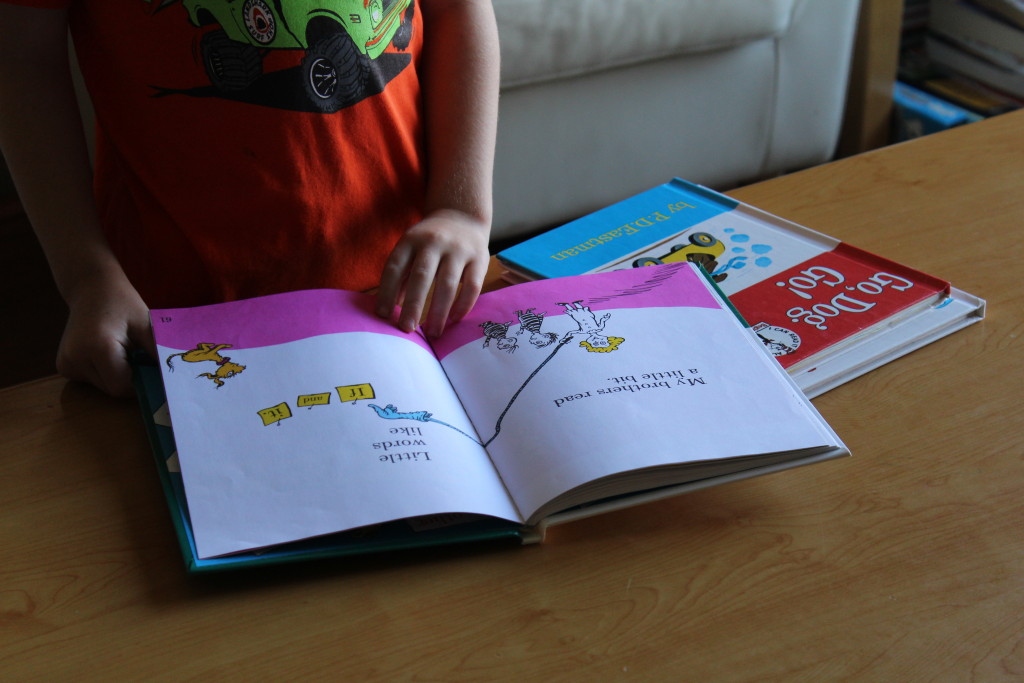There are three books that I have to credit with helping my children learn to read. They are all part of the Beginner Books Series from Random House. While we have an enormous amount of books in our house, these three stick out to me. Through simple language, rhyming, repetition, and fun illustrations, my children read these over and over again. Today, I’d love to share these with you. If you are looking to add books to your home library I suggest you add these! Usually, I would suggest getting books form the library, but these I recommend buying to have at home so your child can read them many times. You can purchase them from the links* in this post or at your local book store.
Hop on Pop by Dr. Suess
How this book helps: This book relies heavily on rhyming. Hearing rhymes helps children detect patterns in our language. When the child starts reading, seeing these patterns in print helps the child relate the sound patterns to how they look in writing. The rhyming words are first isolated so it’s very easy to draw attention to the word endings and how they look the same. Afterwards, children see the word used in a very short rhyming sentence. It gives the child immediate practice recognizing the word in context.
This book was one of the first books my oldest read out loud when he was little.
Put Me In The Zoo by Robert Lopshire
How this book helps: The rhyming in this books helps the child anticipate what word may come next. It also uses a lot of the same words through out the story. This gives the child practice reading the words over and over again, helping to commit the words to memory.
This book was one of the first books that my youngest liked to read out loud.
Go, Dog, Go by P.D. Eastman
How this book helped: This book does not rhyme, but it does uses a lot of the same words over and over again. This helps the child rely more on the context of the story than the rhyming pattern. The pictures help the child figure out tricky words; for example, if the child has trouble reading the word “three”, s/he can count the number of dogs in the picture.
Before my kids attempted to read these books independently, I read them out loud to the boys many times. This gave them an understanding of the story and let them hear the words used. What I like about these books is that they are long, so the child will not likely memorize the whole entire story. While memory of the story is involved, they still have to use their reading skills.
If you are still not sure if your child is reciting a story from memory or really reading try two things. One, have the child point to the words as s/he reads. Are the words matching? That’s a good sign. Is your child’s finger running over the words too quickly or slowly? Then, s/he may be reciting from memory. Two, after your child reads a sentence ask him or her to point to a word. For example, after reading the sentence A green dog on a yellow tree ask your child, “Where is the word yellow?” Can s/he find the word? That’s another good sign that s/he is using a reading skill!
Enjoy reading together ![]()
For more easy to read books, check out this list: 15 Really Easy To Read Books for the Beginning Reader








